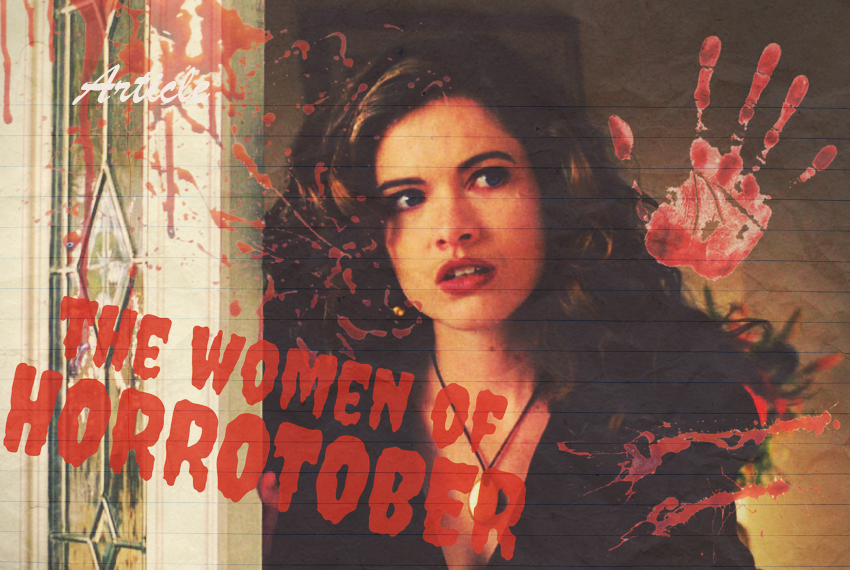What better way to celebrate Halloween than by revisiting every single one of the Halloween franchise films? That's just what I've been doing all month long, so you know what that means: I'm a little punchy at this point and it's time to rank 'em.
A few spoilers lie ahead, of course.
10. and 9. Halloween (2007) and Halloween II (2009)
 |
| "Gotta get back to the pole, Michael. Mommy's busy providin' for you trash-heap hillbillies." |
I'm lumping together the two Rob Zombie reboots because, frankly, they're equally bad. Zombie added a stereotypical Zombie touch to the franchise lore—Michael Myers' family was pure white trash! Michael's mom was an exotic dancer! Dr. Loomis once looked like an old, dirty hippie!—but almost none of it worked, nor was any of it even necessary. Instead, it took what made the taut and lean original so good and bloated it into something unrecognizable. I'm a fan of Zombie's House of a 1,000 Corpses and The Devil's Rejects, but the less said about these two films the better.
8. Halloween: Resurrection (2002)
Technically, this is probably inferior to either of Zombies' attempts, but we're really splitting hairs with these bottom three films; they're all terrible. This one's also an abomination, a crime against both Jamie Lee Curtis and all of humanity, for Anti-Christ's sake. She finished off Mikey in the previous film (chopped his Shatner-masked head off, in fact), and that should have been the fitting end to her story. Nope, instead, she's summarily killed off early in this film (by her Boogeyman brother, of course), and then everything really careens right off the rails. Resurrection is a steaming pile of garbage.
7. Halloween: The Curse of Michael Myers (1995)
 |
| Loomis is so single-minded that he doesn't even notice the baby Rudd's holding. |
6. Halloween H20: Twenty Years Later (1998)
This was the big one, twenty years after John Carpenter's Halloween. Finally, the return of Jamie Lee Curtis to the role of Laurie Strode. And that's about all I have to say about it. It's fine, but mostly dull. Sure, it's nice to see Jamie Lee back in action, this time trying to save her son (Josh Hartnett and his permanently mussed hair) and herself from Michael, but none of it really feels of a piece with the previous films in the franchise. That said, the film that followed, Resurrection, makes H20 look like Citizen Kane.
5. Halloween 5: The Revenge of Michael Myers (1989)
We've reached the cream of the crop now. Each film in my top five is near and dear to my heart, for highly specific reasons. Revenge is to Return as II is to the original—the action picks up only months after the end of Return, with young Jamie Lloyd (Danielle Harris) recovering from the traumatic events of the previous film. Most importantly, this is the film that gave us the cinematic treasures Tina Williams (Wendy Kaplan) and her heart made of neon. She is without question the most divisive characters in the series, which mostly mystifies me. She's a vibrant, life-affirming presence in a franchise firmly rooted in death. I'm firmly Team Tina, and will argue her merits with anyone, any time.
4. Halloween II
It's hard to rank this one lower than the two that follow, but for as much as I love this sequel, the sheer craziness and audacity of the next two films on the list win out for me. Laurie (Jamie Lee Curtis) spends much of the film convalescing in a bizarrely quiet and nearly empty hospital while Michael rampages through the halls, boiling people alive in hot tubs or jamming hypodermic needles in their eyes. You know, just up to his usual antics. The kills in this sequel, however, are from Rick Rosenthal are far more gruesome than in Carpenter's original. Again, these first two films of the franchise act as a wonderfully cohesive set, with II suffering only in comparison to the unimpeachable greatness of the first film.
3. Halloween III: Season of the Witch (1983)
 |
| Is that a mask in your pocket, doctor, or are you just happy to see me? |
2. Halloween 4: The Return of Michael Myers (1988)
 |
| In Haddonfield, cops might do it by the book, but their daughters? Not so much. |
This was the return to form (after the anomaly that is III), the return of Michael Myers to Haddonfield, where he was now stalking Laurie's daughter, Jamie. This time out, Pleasence is joined by a stellar cast, including Ellie Cornell as our hero Rachel, Sasha Jenson as wannabe playa Brady, and Kathleen Kinmont as smoking hot Kelly. Atmospherically eerie, with moments of true terror and vivid horror, the film is lush and tense, culminating in a twist ending that elicits one of Pleasence's most memorably shouted lines of dialogue—and the man shouted a lot of dialogue over the course of his five Halloween films. Pair it with Revenge and you've got a terrific one-two punch of peak mid-period Halloween. In fact, Return was the last truly great Halloween film, and it was all downhill after Revenge.
1. Halloween (1978)
 |
| Still terrifying after all these years. |
*****

All through the month of October, the After Movie Diner has been running an extravaganza of Halloween-related essays, articles, reviews, and podcast episodes. Today, appropriately, my article about the original Halloween is up. I also contributed seven (!) essays about some of my favorite "Women of Horror", five of which have run as of this writing—Lili Taylor in The Addiction, Laurie Zimmer in Assault on Precinct 13, Shelley Duvall in The Shining, Belinda Balaski in The Howling, and Heather Langenkamp in Wes Craven's New Nightmare. Look for pieces on Carla Gugino in Gerald's Game and Wendy Kaplan in Halloween 5 soon.


Comments
Post a Comment